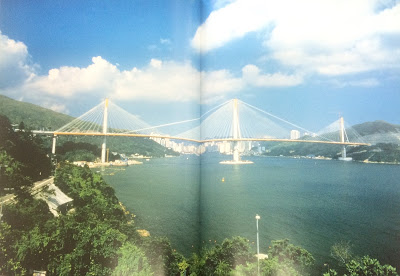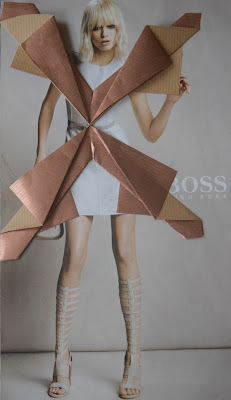On the morning of day 4 we were given until 1:30 to build a structure out of twenty spaghetti pieces that would be strong enough to hold three plastic balls off the surface of the table.

After designing a few possibilities, I settled for this one which remained in keeping with my theme of triangles from earlier on in the week. I first created a simple square base with two spaghetti pieces stuck together with a gun to make up each side making it extra strong. I then crossed two spaghetti pieces over at different point of opposite sides of the square.
In doing this I used the straight and angular characteristics of this material to create an interesting looking structure.
My inspiration ultimately came from a dish drying rack or a book stand.
I also used the glue to create an interesting webbed aesthetic, to look as if something were drooping off the spaghetti pieces.
Although there were some frustrating aspects of this challenge such as waiting long periods for the glue to dry and the structure so very brittle that sections would detach quite easily, I really enjoyed this challenge as it was very satisfying to create a free standing structure out of such challenging material.
I also used other objects such as mini plastic figures and a pencil to place on the structure and balls in order to put it into a new context.

After designing a few possibilities, I settled for this one which remained in keeping with my theme of triangles from earlier on in the week. I first created a simple square base with two spaghetti pieces stuck together with a gun to make up each side making it extra strong. I then crossed two spaghetti pieces over at different point of opposite sides of the square.
In doing this I used the straight and angular characteristics of this material to create an interesting looking structure.
My inspiration ultimately came from a dish drying rack or a book stand.
I also used the glue to create an interesting webbed aesthetic, to look as if something were drooping off the spaghetti pieces.
Although there were some frustrating aspects of this challenge such as waiting long periods for the glue to dry and the structure so very brittle that sections would detach quite easily, I really enjoyed this challenge as it was very satisfying to create a free standing structure out of such challenging material.
I also used other objects such as mini plastic figures and a pencil to place on the structure and balls in order to put it into a new context.
In the afternoon we had a full group crit where everyone put their creations on display. It was very interesting to see the different solutions people had come up with for this challenge as although some where similar, people had approached the task in many different ways; some structures were clearly planned whereas others were very random but none the less worked really well.
Using five sheets of paper, we were then given an hour to protect our 3D structure from a downward force.
The way I had built my structure made it very difficult to think of ways that I could manipulate the paper to protect it.
I experimented with different techniques such as buffering to protect it but due to time constraints, my attempt was pretty hopeless in the end.
We then placed all our "protected" structures down in the corridor and the success of our solutions were put to the test as a basket ball was subsequently dropped on top of them. Most creations did not survive however a few did. Overall I felt that this was a very enjoyable activity as everyone was excited to see which creations would survive.





























































